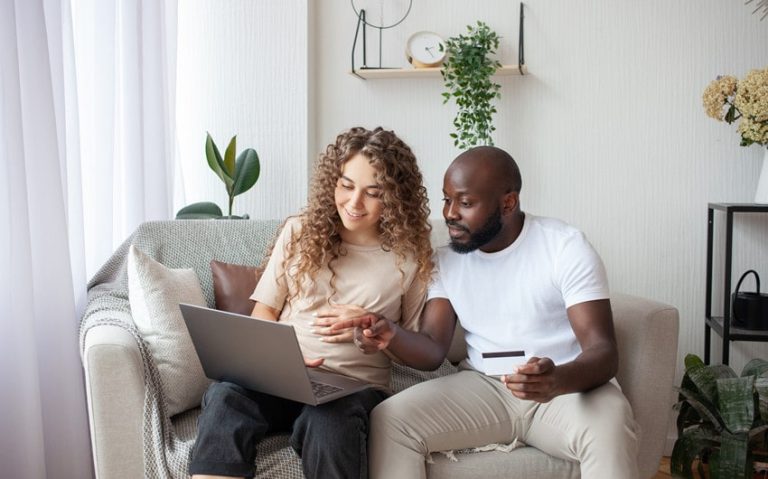Exploring PDA Meaning in a Relationship and Its Impact
Public displays of affection, or PDA, are a common part of many relationships, but what exactly do they mean? Understanding the PDA meaning in a relationship is essential for couples who want to express their love and strengthen their bond. PDA can range from holding hands to sharing a kiss in public, and it’s a way to show your affection and commitment to each other.
This article explores the significance of PDA, why couples engage in it, and how it impacts your relationship. Whether you’re comfortable with PDA or not, knowing its meaning can help you navigate your romantic life better.
What Is PDA?

PDA, or Public Displays of Affection, refers to physical demonstrations of affection between a couple in public settings. These displays can vary widely, from simple gestures to more overt expressions of love. Common examples of PDA include:
- Holding Hands: A gentle, comforting gesture that signifies unity and connection.
- Hugging: An embrace that offers comfort and reassurance.
- Kissing: Whether a quick peck or a more passionate kiss, this is a clear expression of love and attraction.
- Cuddling: Sitting or standing close, often with arms wrapped around each other, shows closeness and affection.
- Touching: Simple touches on the arm, back, or face can convey affection and care.
- Compliments and Sweet Words: Speaking kindly and affectionately to each other, often accompanied by loving looks or touches.
PDA is not just about the physical acts themselves but also about the feelings and intentions behind them. It is a way for couples to show the world that they are together and to reinforce their bond with each other.
While some people may feel comfortable with public displays of affection, others might find them uncomfortable or inappropriate depending on cultural norms, personal preferences, or the specific context of the situation.
What Does PDA Mean in a Relationship?
The PDA meaning in a relationship goes beyond mere physical acts; it reflects the emotional and psychological aspects of a couple’s bond. Here’s what PDA signifies in a relationship:
- Expression of Love and Affection: PDA is a way for couples to openly express their love and affection for one another. It shows that they are proud to be together and want to share their happiness with the world.
- Commitment and Security: Engaging in PDA often indicates a strong commitment to the relationship. It reassures both partners of their bond and helps build a sense of security and trust.
- Public Declaration of Togetherness: PDA serves as a public declaration of the relationship. It communicates to others that the couple is together and dedicated to each other.
- Emotional Connection: Physical touch releases oxytocin, often referred to as the “love hormone,” which strengthens the emotional connection between partners. PDA can enhance feelings of intimacy and closeness.
- Support and Comfort: Simple acts of PDA, like holding hands or hugging, can provide emotional support and comfort. It can be particularly meaningful during stressful or challenging times, offering reassurance and stability.
- Setting Boundaries and Respect: The level of PDA that a couple engages in can also reflect mutual respect and understanding of each other’s comfort levels and boundaries. It’s important for partners to communicate openly about what they are comfortable with and to respect each other’s preferences.
In summary, PDA in a relationship is not just about physical touch; it’s a multifaceted expression of love, commitment, and emotional connection. Understanding what PDA means to both you and your partner can help strengthen your bond and ensure that both of you feel valued and respected in the relationship.
What Is the Impact of PDA on a Relationship?
The impact of PDA on a relationship can be both positive and negative, depending on how it is expressed and received by both partners and those around them. Here’s a closer look at the potential effects:
Positive Effects
1. Strengthening Emotional Bonds
Engaging in PDA can strengthen the emotional bond between partners by fostering feelings of intimacy and closeness. Physical touch and affection help release oxytocin, enhancing the connection. This can make partners feel more secure and loved.
2. Building Trust and Security
Regular displays of affection can build trust and a sense of security in the relationship. Knowing that your partner is willing to show their affection publicly can reassure you of their commitment. This public affirmation can be particularly important in maintaining long-term relationship stability.
3. Increasing Relationship Satisfaction
Studies have shown that couples who engage in PDA often report higher levels of relationship satisfaction. This may be because PDA is a visible reminder of the affection and love shared between partners. This ongoing expression of love can help sustain relationship happiness.
4. Providing Comfort and Support
PDA can offer comfort and support, especially in challenging situations. Holding hands, hugging, or a gentle touch can be soothing and reassuring, helping to reduce stress and anxiety. This physical closeness can provide emotional stability during difficult times.
5. Fostering Public Perception of Unity
When couples engage in PDA, it can signal to others that they are united and committed. This can foster a positive public perception of the relationship and reinforce the bond between partners. This outward expression of togetherness can enhance the couple’s social presence.
Negative Effects
1. Discomfort and Embarrassment
Not all individuals are comfortable with PDA. If one partner is more reserved, excessive PDA can cause discomfort or embarrassment. It’s important to communicate and respect each other’s boundaries to avoid feelings of unease.
2. Social and Cultural Taboos
In some cultures and social settings, PDA is frowned upon or considered inappropriate. Engaging in PDA in such contexts can lead to negative judgments or social consequences. Being aware of these norms can help couples navigate PDA more appropriately.
3. Potential for Miscommunication
If partners have different expectations or comfort levels with PDA, it can lead to misunderstandings or conflict. Clear communication about preferences and boundaries is essential to prevent misalignments and ensure mutual satisfaction.
4. Excessive PDA
While moderate PDA can enhance a relationship, excessive PDA might be perceived as overcompensation or insecurity. It can also make others around uncomfortable, leading to social awkwardness. Balancing PDA to ensure it is appropriate for the setting can prevent negative perceptions.
What Are the Etiquette and Boundaries for PDA?
Navigating the etiquette and boundaries for PDA is crucial to ensure that both partners feel comfortable and respected. Here are some guidelines to help manage PDA appropriately:
1. Discuss Preferences
Openly discuss your preferences and boundaries with your partner. Understanding each other’s comfort levels with PDA is the first step to ensuring that both of you feel respected and valued. This discussion can help avoid potential misunderstandings and conflicts.
2. Consider the Context
Always consider the social and cultural context when engaging in PDA. What’s acceptable in one setting may not be appropriate in another. For example, a quick kiss might be fine in a park but could be frowned upon in a formal setting or certain cultural contexts.
3. Respect Boundaries
Respect your partner’s boundaries regarding PDA. If one partner is less comfortable with public displays of affection, find ways to express your love that make both of you feel good. It’s important to prioritize mutual respect and understanding.
4. Be Mindful of Others
Be aware of the people around you. Excessive PDA can make others uncomfortable, especially in close quarters or family settings. Aim to keep your displays of affection moderate and considerate of those around you.
5. Adjust Based on Feedback
Pay attention to your partner’s feedback and body language. If they seem uncomfortable or hesitant, adjust your behavior accordingly. It’s important to remain sensitive to their feelings and preferences.
6. Keep It Classy
Aim to keep PDA classy and tasteful. Avoid overly intimate or explicit displays that might be considered inappropriate in public settings. Simple gestures like holding hands or a light hug can be just as meaningful without crossing boundaries.
7. Balance Public and Private Affection
Balance public displays of affection with private moments. While PDA can enhance your relationship, private expressions of love are equally important and can provide deeper emotional connections.
When PDA Becomes Problematic
While PDA can have many positive effects, it can also become problematic if not managed appropriately. Here are some signs that PDA might be causing issues and how to address them:
Excessive or Inappropriate PDA
If PDA becomes excessive or inappropriate for the setting, it can lead to social discomfort or negative judgments. For example, making out in a restaurant or being overly affectionate at a family gathering might be seen as disrespectful. Being mindful of the context can help avoid these situations.
Discomfort for One Partner
If one partner feels uncomfortable or embarrassed by the level of PDA, it can create tension and strain in the relationship. It’s crucial to respect each other’s comfort levels and find a balance that works for both.
Negative Social Consequences
In some cultures or social circles, excessive PDA can lead to negative social consequences, such as judgment or exclusion. Understanding and respecting cultural norms can help navigate PDA more effectively.
Potential Insecurity or Overcompensation
Sometimes, excessive PDA might be a sign of insecurity or an attempt to overcompensate for issues in the relationship. It’s important to address underlying insecurities directly rather than relying on PDA to validate the relationship.
Impact on Social Interactions
Excessive PDA can impact social interactions by making others uncomfortable or overshadowing group dynamics. It’s important to remain considerate of others and ensure that PDA does not disrupt social settings.
Addressing the Issue
If PDA becomes problematic, it’s important to have an open and honest conversation with your partner. Discuss your feelings and concerns, and work together to find a balance that makes both of you comfortable. Compromise and mutual respect are key to resolving issues related to PDA.






